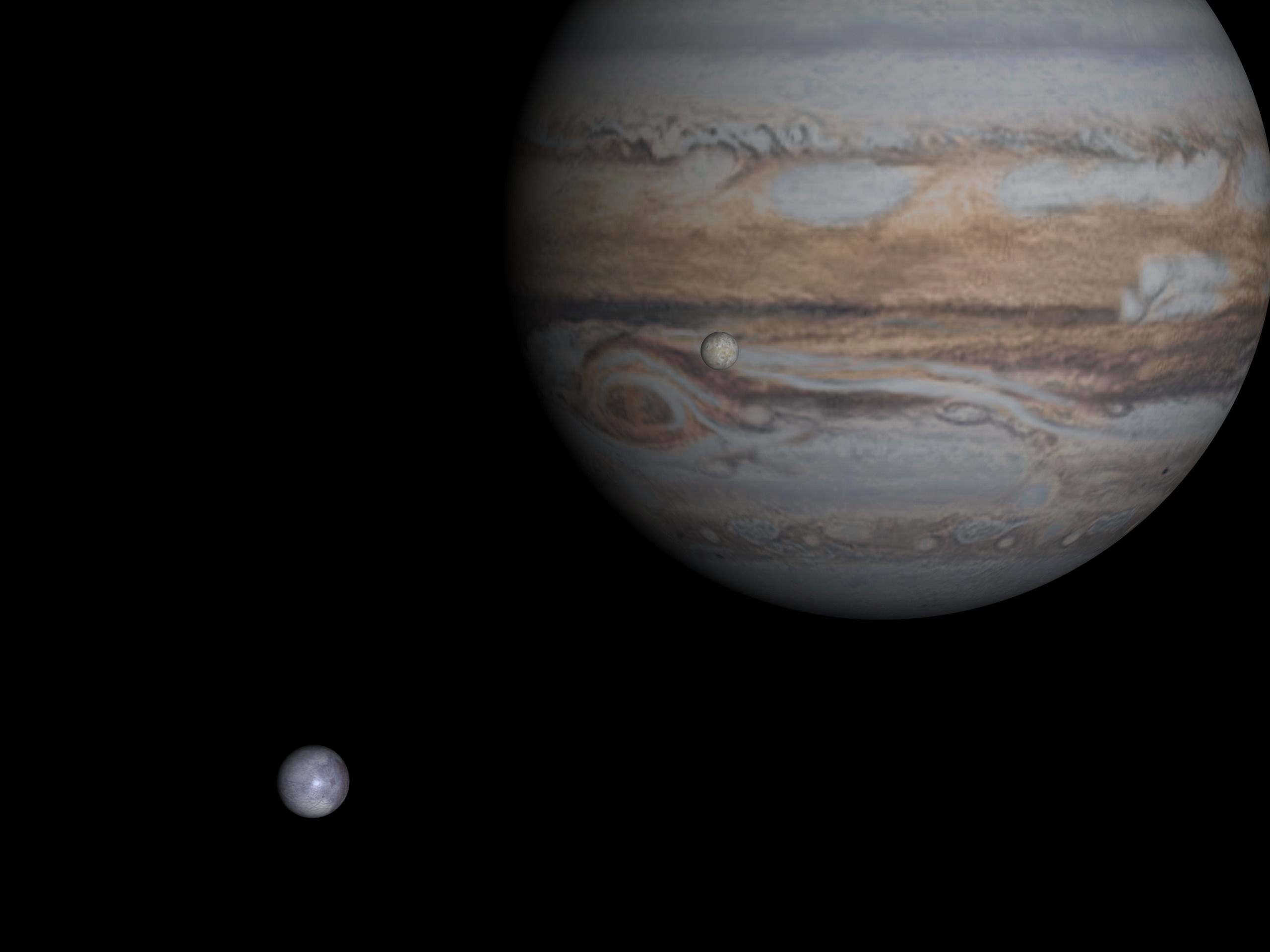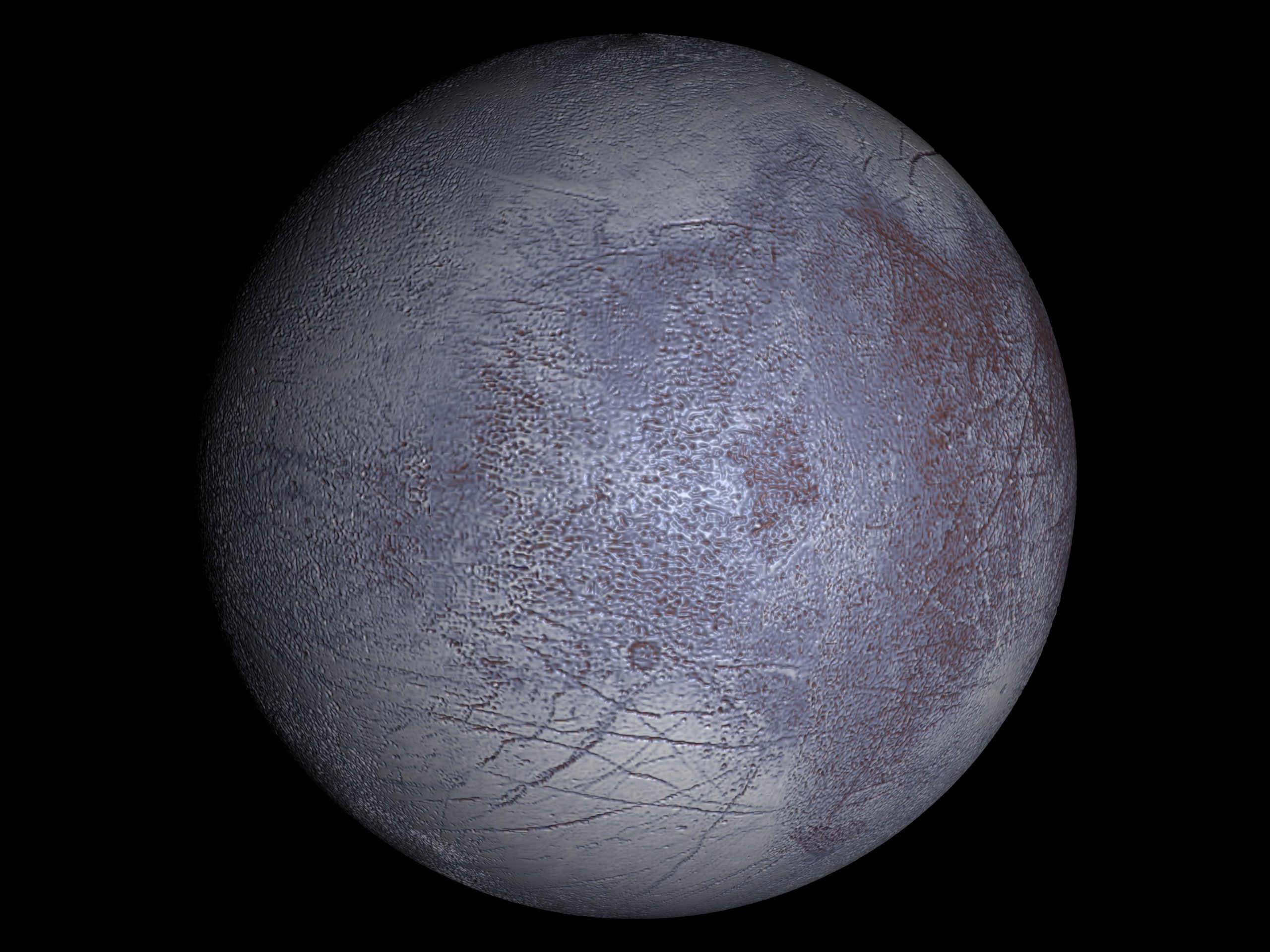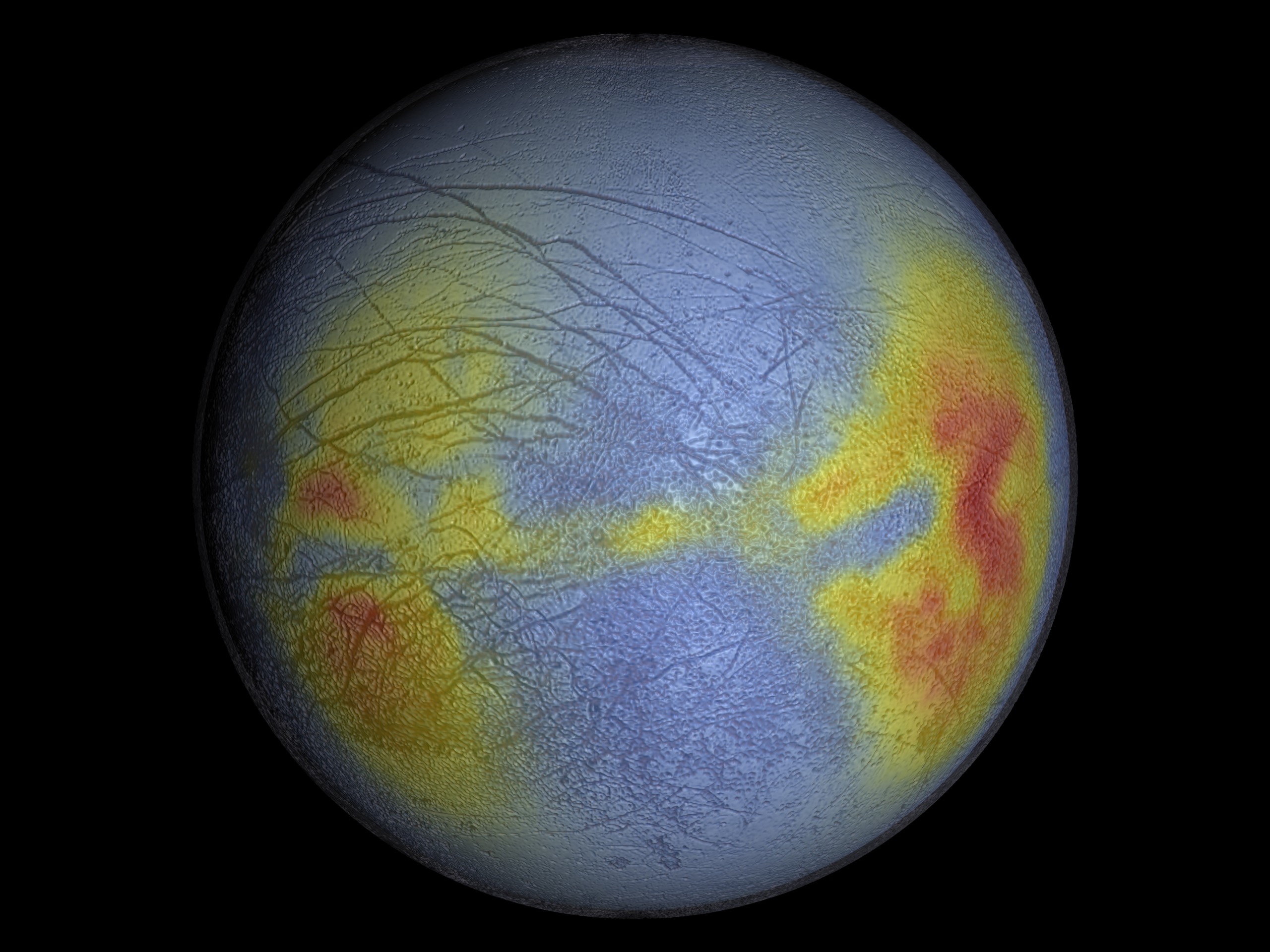Sun
Planets and Moons
ID: 2946
Encounters with Jupiter's moon Europa by the Voyager and Galileo spacecraft indicated that a liquid salty ocean might exist below a layer of surface ice that is up to 10 kilometers thick. An ocean general circulation model developed to study the earth's oceans was used to investigate the tidally-forced ocean circulations on Europa. The orbit of Europa is 'gravity locked' so that the same side of Europa always faces Jupiter as is the case with the earth's moon. The icy surface of Europa heaves up and down 50 meters due to the strong tidal forces. This visualization shows the temperature changes induced from the flow fields calculated for a European ocean 50 kilometers deep. The warmest temperatures tend to be near the equator, not because of heating by the sun, but because the currents in the European ocean move the warmest waters to that location. Understanding the thermal and flow fields from these model runs will help to interpret observations from future missions to Europa such as the Jupiter's Icy Moons Orbiter mission proposed for launch in 2012.



Europa's Synthetic Subsurface Heat Transport (Version 2)



Visualization Credits
Alex Kekesi (Global Science and Technology, Inc.): Lead Animator
Marte Newcombe (GST): Animator
David Adamec (NASA/GSFC): Scientist
Marte Newcombe (GST): Animator
David Adamec (NASA/GSFC): Scientist
Please give credit for this item to:
NASA/Goddard Space Flight Center Scientific Visualization Studio
NASA/Goddard Space Flight Center Scientific Visualization Studio
Short URL to share this page:
https://svs.gsfc.nasa.gov/2946
Missions:
Galileo
Voyager
Data Used:
Note: While we identify the data sets used in these visualizations, we do not store any further details nor the data sets themselves on our site.
Keywords:
SVS >> For Educators
SVS >> Space Science
SVS >> Spacecraft >> Voyager
SVS >> Spacecraft >> Galileo
SVS >> Solar System >> Planets >> Jupiter >> Moons
SVS >> Galilean moons >> Europa
NASA Science >> Sun
NASA Science >> Planets and Moons
Places you might have seen this:
Europa Report
https://svs.gsfc.nasa.gov/2946
Missions:
Galileo
Voyager
Data Used:
Ocean General Circulation Model
Model - Asked David Adamec and John WaldropKeywords:
SVS >> For Educators
SVS >> Space Science
SVS >> Spacecraft >> Voyager
SVS >> Spacecraft >> Galileo
SVS >> Solar System >> Planets >> Jupiter >> Moons
SVS >> Galilean moons >> Europa
NASA Science >> Sun
NASA Science >> Planets and Moons
Places you might have seen this:
Europa Report











